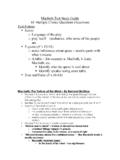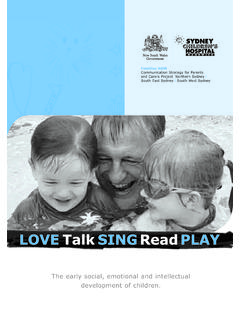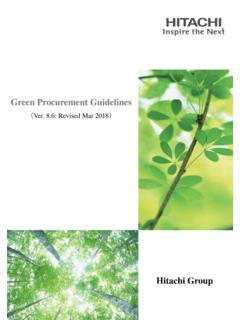Transcription of Wellness to World Cup - Canada Soccer
1 Wellness to World CupSupporting wellnessthrough to World CupexcellenceThe diagram shows how the LTPD modelaccommodates athletes at all levels ofinterest, ability and achievement. Afterchildren enter at the Active Start stageand become physically literate, they cancontinue on a pathway towardsexcellence or choose to enter an Activefor Life recreational stream. The modelpromotes maximum player retention forboth optimum Wellness and the Beautiful GameSoccer is the largest participation sport inCanada and the World , providing healthyphysical activity for players at all levels the most basic level of participation, Soccer promotes the integrateddevelopment and maintenance of thecardiovascular, musculoskeletal and neuromuscular systems. It helps in preventing many conditions and diseases(including heart disease, obesity, andosteoporosis) and enhances the wellbeing of individuals across the the high performance level, Soccer is avehicle for elite athlete achievement andhailed internationally as The BeautifulGame.
2 It is played with finesse and skillsthat are difficult to master, and playersprogress through sequential stages ofdevelopment to become World class. Canadian Soccer LTPDW ellness to World CupLong-Term player development (LTPD)LTPD is a program for Soccer player development , training, competition, and recovery based on biological age ( maturity) rather than chronological age. It is player centred, coach driven, and administration, sport science,and sponsor : Eliminates gaps in the player developmentsystem. Guides planning for optimal athlete performanceat all stages. Provides a framework for program alignment andintegration, from volunteer club coaches tonational and professional teams. Follows scientific principles and practical for players & parents: Better understanding of what makes a goodsoccer program. More players learning at their level and havingfun. Appropriate game and league structures ( sizeof balls, goals, field etc.). More opportunity for players to realize theirathletic potential.
3 More coaches who are knowledgeable in leadingsafe, effective for coaches & clubs: Information and education on effective coachingand practice methods. Guidelines for appropriate game structures. Guidelines on appropriate competition levels. Established pathways for player development for alllevels of ability and ambition. Affirmation of best practices for coaches and for all: Competitive behaviour is fostered in players, whileover-competitive behaviour is discouraged in adults( coaches and parents). Players, parents, coaches, and administratorsunderstand that players are unique and thereforedifferent in interest and aptitude. Players stay involved in the sport throughout theirlives (as players, coaches, referees or clubadministrators). Soccer grows, and lifelong Wellness is promoted forplayers of all ages, genders, and levels of ability from Canadian Sport for Life: long -Term Athlete development Resource Paper, Ottawa: Canadian Sport Centres, 2005.
4 The complete document is available at contributes to the well-being of children by engaging them in the sportwhile teaching them basic movements. At this introductory level, the objectiveis to get moving and to keep :Home, daycare, schools, clubs, community, parks and recreation :Provide early opportunities for children to learn basic Soccer :Technical leaders, parent coaches, parents, educators, :Training in Physical Literacy (CSA Program). Physical Provide the environment for learning proper fundamental movement skills such as running,jumping, twisting, kicking, throwing and catching. Technical The player and the ball: Running with the ball, dribbling, controlling, kicking and shooting. Tactical None. Mental Fun, fascination, and passion for Structure:No competitive games adult and child play together training times:30 to 45 Length:4 to 16 weeks Winter/Spring/Summer, indoor and/or : player success is encouraged. While the adult should challenge the child player , they should allow the child to score goals and beat the adult opponent.
5 Adult discontinues play when the child has lost 1: Active StartU4-U6 Female and Male FIRST KICKS Canadian Soccer Association long Term player development - Wellness to World CupAt this stage, individual player development is and teachers should create a stimulating learning environment where the atmosphere is Freedom and Fun. Physical Develop the ABCs of movement: agility, balance, co-ordination and speed, as well as running,jumping, twisting, kicking, throwing and catching. Technical Movement exercises/games designed to promote a feel for the ball: gaining ball control inreceiving passes, dribbling, passing less than 25m, kicking the ball forward, and shooting on goal. Tactical Small children are egocentric playing the ball is the most important objective. However, theynow need to be introduced to co-operation between players. They gain understanding of the game through playing situations. Mental Basic awareness of environment to build game intelligence and decision SIZESGame FormatSquad SizeGame durationBall SizeMin/Max widthMin/Max lengthGOAL SIZES no larger than3 v 3 *Max 62 x 15 to 22m25 to 30m5 X 8 v 4 *Max 82 x 15 to 25m30 to 36m5 X 8 v 5 *Max 102 x 15 to 30m30 to 36m5 X 8 Structure: Ranges from 3v3 to training times:30 to 45 Length: 12 to 20 weeks, indoor and/or : No league standings jamboree format emphasis is on FUN.
6 Players and game formats are organized to support the basic playingexperiences. All players play equal time and try all team positions, including goalkeeping. Equal time should be allotted to practice and games.*With or without goalkeeper - when no goalkeeper, reduce the goal :Home, schools, :Provide opportunities for children to learn basic Soccer :Physical education teacher, parent coach, team coach, club head :Training in Physical Literacy (CSA Program).STAGE 2: FUNdamentalsU6-U8 Female and U6-U9 Male FUN WITH THE BALL Canadian Soccer Association long Term player development - Wellness to World Cup3 STAGE 3: Learning to TrainU8-U11 Female / U9-U12 Male THE GOLDEN AGE OF LEARNING The effect of the role-model is very important at this stage. Children begin to identify with famous playersand successful teams, and they want to learn imaginative skills. Skill demonstration is very important, andthe players learn best by doing. Players move from self-centered to self-critical, and they have a highstimulation level during basic skills is also an important time to teach basic principles of play and to establish a training ethic and discipline.
7 Repetitions are important to develop technical excellence, but creating a fun and challengingenvironment is still essential for stimulating learning. Physical This is an optimal window for trainability of speed, flexibility andskills. Technical Building a greater repertoire of Soccer related movements; technical skills are developed in training and within the context of basic Soccer games. Tactical Developing environment awareness and encouraging decision making:simple combinations, marking and running into space. Mental Golden age of learning; intrinsic motivation is developed by the Fun andEnjoyment that foster desire to play; imagination, creativity, increased demands, discipline. Game Structure:Ranges from 6v6 to training times:45 to 70 Length: 16 to 20 weeks, indoor and/or : Small leagues provide game fixtures, but no league standings are recorded. Players and game formats are organized to support the basic playing experiences.
8 All players play equal time and try all team positions, including goal keeping. The game structure progresses between ages from simple to more complex. The training to competition ratio should be 2 to 3 training sessions for every SIZESGame FormatSquad SizeGame durationBall SizeMin/Max widthMin/Max lengthGOAL SIZES no larger than6 v 6 Ideal 8/Max 102 x 25 to 36m40 to 55m6 X 14 v 7 Ideal 9/Max 122 x 25 to 36m40 to 55m6 X 16 v 8 Ideal11/Max 142 x 30 to 55m60 to 75m6 X 18 :Clubs, district/regional development centers, : player development and talent :Coaches, technical leaders, physical education teachers. Coaching:Training in Physical Literacy (CSA Program).Canadian Soccer Association long Term player development - Wellness to World CupThe optimal window of trainability for stamina begins with the onset of Peak Height Velocity (PHV), morecommonly known as the adolescent growth spurt. The demands of skill training as well as training loadsshould increase, thus provoking improvement in mental toughness, concentration and diligence.
9 Awareness of tactics within the game becomes an important facet of the learning process. Players tend tobe self-critical and rebellious, but they have a strong commitment to the :Sports Schools, select programs (regional, provincial, national), NTC, Clubs, Sport : player development , talent identification and talent :Club head coaches & team coaches, Provincial & National team :CSA B Preparatory License, Provincial B License, National B and A License. Physical Flexibility, disciplined warm-up and cool-down, agility, aerobic and anaerobic endurance, strength,core strength and stability, balance, nutrition and proper diet (pre-game, post-game, tournaments), preventionand care of injuries, importance of rest/recovery. Personalized programs needed in order to respect the growthspurt. Technical Introduction of advanced techniques to those who are capable; technical acquisition in a morecomplex environment and position-specific skills. Tactical Team work: development of tasks per unit (defensive, midfield or forward unit) and positionalawareness through small-sided games and competitive matches.
10 Mental Pre-competition routine, introduction to mental preparation, goal setting, coping with winning and losing. 4 Game Structure:Ranges from 8v8 to 11v11 at U13 training times:60 to 75 Length: As players progress through this stage, they move towardsyear-round play that includes appropriate rest and recovery : Appropriate ratio of training, competition and rest throughout the year; periodizedplanning is critical. Training to competition ratio should be between 5 to 12 for every game. First experience in the select programs: regional, provincial and Canadian Soccer Association highly recommends that no 11 a-side Soccer be played before SIZESGame FormatSquad SizeGame durationBall SizeMin/Max widthMin/Max lengthGOAL SIZES no larger than8 v 8 Ideal 11/Max 142 x 30 to 55m60 to 75m6 X 18 v 9 Ideal 12/Max 162 x 35 to 55m60 to 75m6 X 18 v 11 Ideal 16/Max 182 x 35 X 24 4: Training to TrainU11-U15 Female / U12-U16 Male IDENTIFYING THE ELITE player At this stage, elite Soccer groups express interest in recruiting talented youth players.







